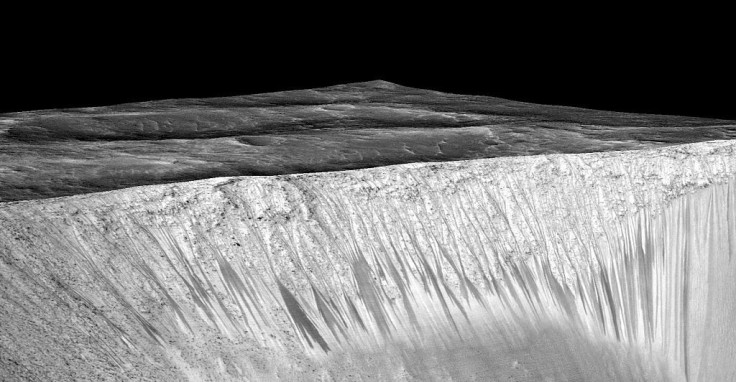Mars Alien Life May Be Discovered Thanks To Ancient Alaskan Ice

Beneath the icy salt water of the Arctic tundra, a group of scientists discovered something amazing: microbial communities that have been living beneath the surface undisturbed for roughly 50,000 years.
These communities thrive in liquid pockets called cryopegs and they may hold the clues on how to find alien life on Planet Mars. According to a report from Business Insider, studying the microbes that have survived in extreme environments could actually tell scientists what kind of life forms to look for when studying alien regions like the Red Planet or even the Saturn moon Titan.
The icy region is part of the large area that has remained unexplored here on Earth called permafrost. Here, bacteria and viruses have remained trapped for thousands of years. Per the report, the unchanging conditions actually mimic the cold and icy environment of other planets so there is a big chance that similar microbes could be lurking somewhere in the cold.
This theory is part of a recent study conducted by a group of researchers from the University of Washington. To prove their point, they actually started probing subsurface pockets where saltwater mixes with sediments. This is where they discovered the microscopic bacteria that are estimated to have been around for 50,000 years.
“We study really old seawater trapped inside of permafrost for up to 50,000 years, to see how those bacterial communities have evolved over time,” Zachary Cooper, an oceanographer who presented a portion of the research, said in a statement.
The process involved drilling to reach an underground packet 20 feet below the permafrost somewhere in Utqiaġvik, Alaska. Using DNA analysis, the team was able to present and prove that there is indeed a thriving community of bacteria beneath the permafrost. This is a surprising discovery to the researchers and it strengthened their belief that if the microbes could survive here, then it’s possible that microbes could also survive in the extreme conditions of other planets.
“The extreme conditions here are not just the below-zero temperatures, but also the very high salt concentrations. One hundred forty parts per thousand – 14 percent – is a lot of salt. In canned goods, that would stop microbes from doing anything,” Jody Deming, also an author of the study, said.

© Copyright IBTimes 2025. All rights reserved.





















